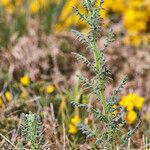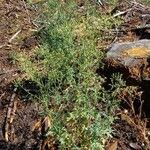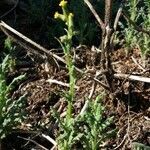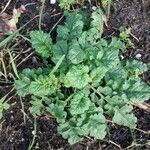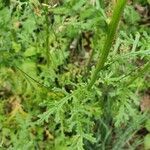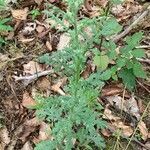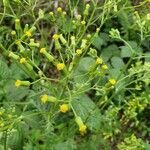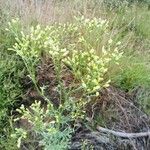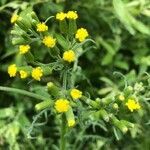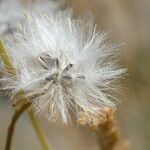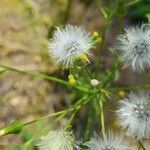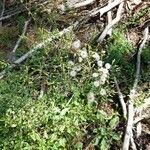Annual 1.5–8 dm from a ± evident taproot, leafy throughout, generally simple to the infl, sparsely or moderately pubescent with crisp loose hairs, or subglabrous; lvs all ± pinnatifid and irregularly toothed, 2–12 cm × 4–40 mm; heads several or many, the disk 3–7 mm wide; invol 5–7 mm, its principal bracts ca 13; bracteoles inconspicuous or wanting, not black-tipped; rays reduced and inconspicuous, less than 2 mm; pappus very copious, equaling or surpassing the disk-fls; achenes strigillose-canescent; 2n=40. A weed in disturbed soil and waste places; native of Europe, established here and there in the n. part of our range, especially in n. N. Engl. July–Sept.
Annuals, (15–)30–80+ cm (taproots fibrous-rooted). Herbage puberulent (hairs abundant, curly). Stems single. Leaves evenly distributed; petiolate; blades obovate to oblong, 3–7(–12) × 1–3(–4) cm, usually 1–2-pinnate, bases tapered, ultimate margins dentate (distal leaves similar, clasping, bractlike). Heads 12–24 in corymbiform arrays. Calyculi 0 or of 1–5+ linear to filiform bractlets. Phyllaries ± 13 (± 21), 4–7+ mm, tips greenish or minutely black. Ray florets 0 or 1–8+; corolla laminae usually 1–2+ mm (barely surpassing phyllaries). Cypselae hairy (especially on angles). 2n = 40.
